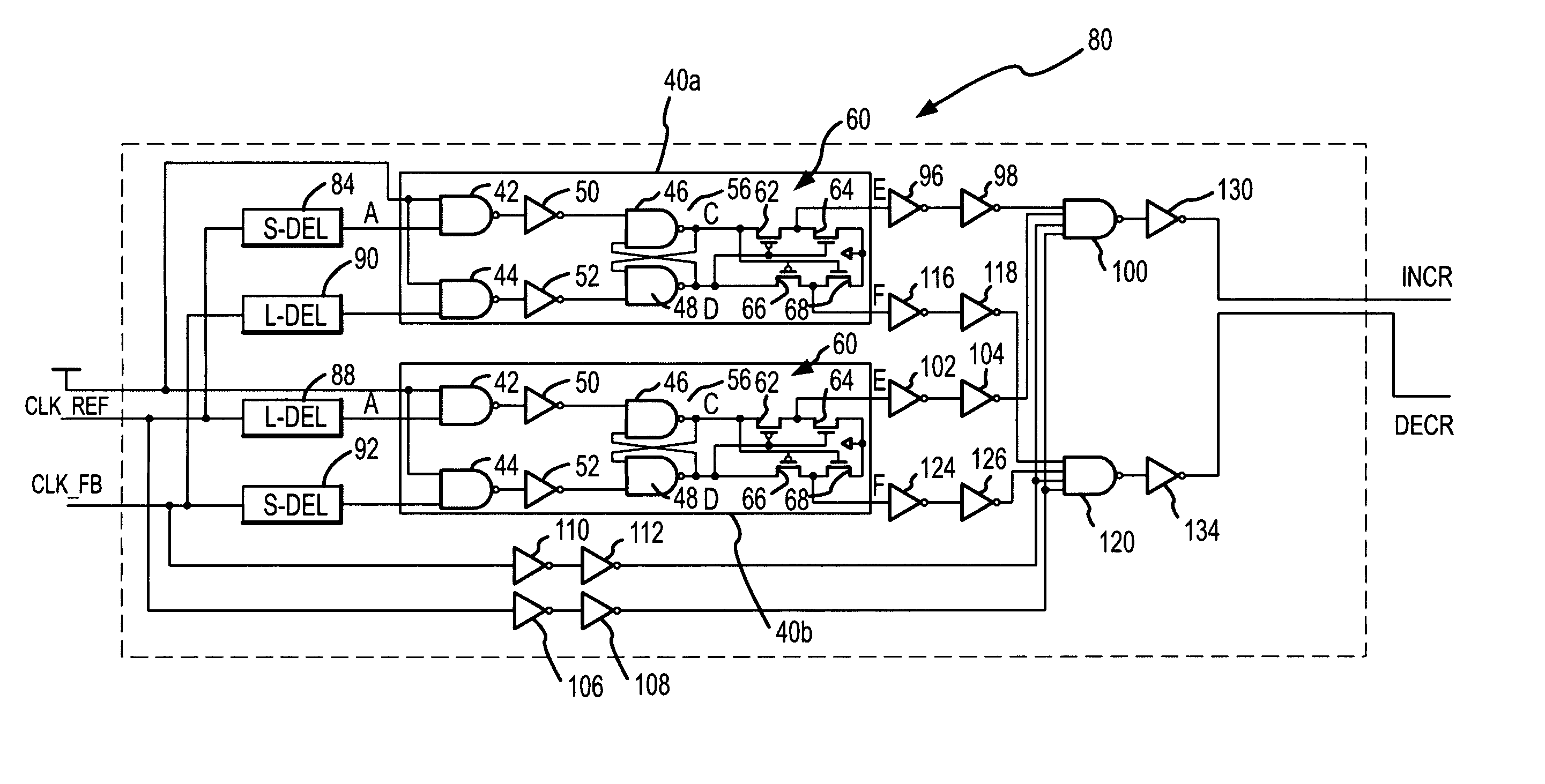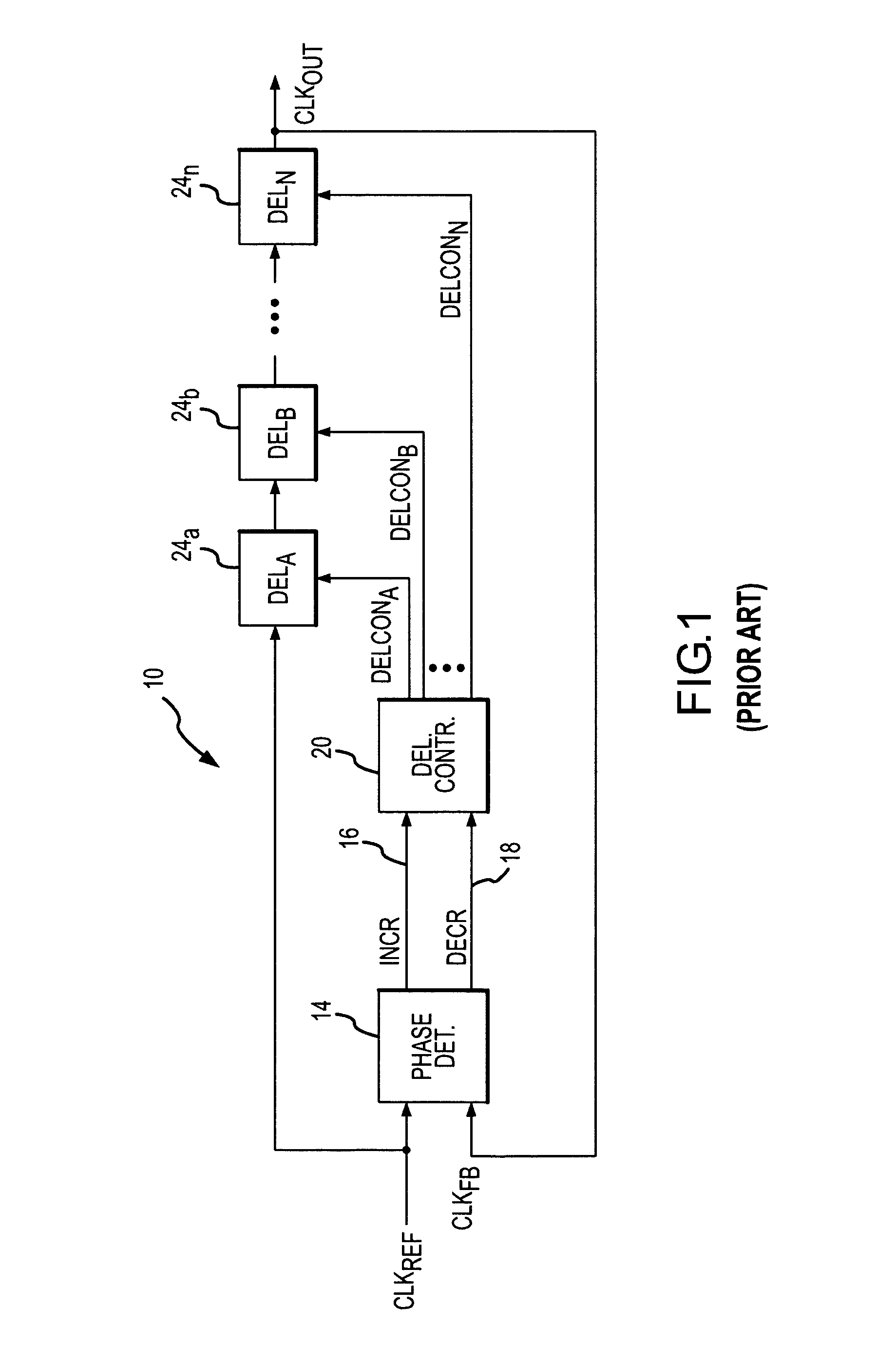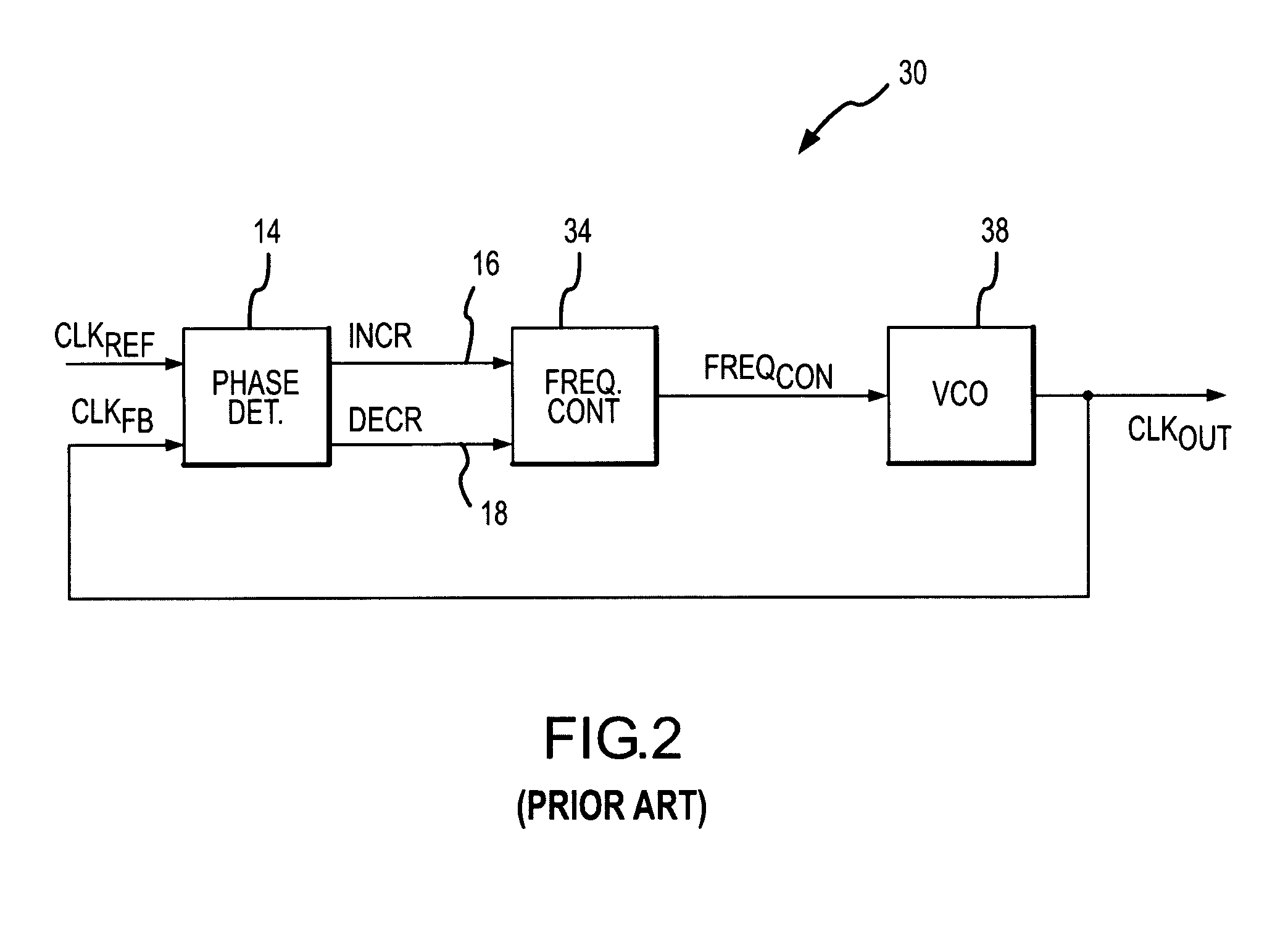Phase detector and method having hysteresis characteristics
a phase detector and hysteresis technology, applied in oscillation comparator circuits, instruments, and demodulation of angles, can solve the problems of high frequency components, serious disadvantages, and delay of clk/sub>out signal,
- Summary
- Abstract
- Description
- Claims
- Application Information
AI Technical Summary
Problems solved by technology
Method used
Image
Examples
Embodiment Construction
[0036]An arbiter phase detector 70 according to one embodiment of the invention is shown in FIG. 6, and the operating characteristics of the phase detector 70 are shown in FIG. 7. FIG. 7 shows various phases of the CLKFB signal in dotted limes relative to the CLKREF signal. More specifically, the CLKFB signal 72 is shown leading the CLKREF signal 74 by a first delay value DEL1, and the CLKFB signal 76 is shown lagging the CLKREF value by a second value DEL2. When the CLKFB signal leads the CLKREF signal by more than the delay value DEL1, the phase detector 70 generates an INCR signal. When the phase detector 70 is used in a delay-lock loop, phase-lock loop or other closed-loop circuit, the INCR signal causes the delay of the CLKFB signal to be increased so that the phase difference between the CLKFB signal and the CLKREF signal decreases. When the CLKFB signal lags the CLKREF signal by more than the delay value DEL2, the phase detector 70 generates a DECR signal. The DECR signal cau...
PUM
 Login to View More
Login to View More Abstract
Description
Claims
Application Information
 Login to View More
Login to View More - R&D
- Intellectual Property
- Life Sciences
- Materials
- Tech Scout
- Unparalleled Data Quality
- Higher Quality Content
- 60% Fewer Hallucinations
Browse by: Latest US Patents, China's latest patents, Technical Efficacy Thesaurus, Application Domain, Technology Topic, Popular Technical Reports.
© 2025 PatSnap. All rights reserved.Legal|Privacy policy|Modern Slavery Act Transparency Statement|Sitemap|About US| Contact US: help@patsnap.com



